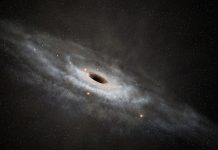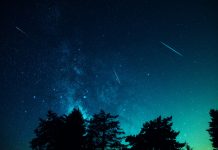Dark matter makes up around 25% of the universe, but scientists still don’t know what it’s made of. It doesn’t emit light or respond to electromagnetic forces, so it’s invisible to telescopes
Researchers only know it’s there because of the gravitational pull it exerts on galaxies and other cosmic structures
However, a new study by an Anglo-American research team may offer an exciting lead in solving this cosmic puzzle. The researchers propose the existence of unusual stars known as dark dwarfs, which could serve as natural laboratories for understanding dark matter.
What are dark dwarfs?
Dark dwarfs are low-mass celestial objects that resemble brown dwarfs, which are stars that are too small to trigger nuclear fusion like our Sun does. Usually, brown dwarfs give off only a faint glow, powered by the energy from their gravitational contraction.
But under some conditions, these ordinary brown dwarfs can change into something more intriguing.
In areas of the universe where dark matter is especially dense, such as the centre of our galaxy, these objects could collect and store dark matter. If the dark matter particles are a particular kind, they could interact and annihilate each other inside the star, releasing heat and energy.
This process could allow the brown dwarf to shine more brightly, becoming what scientists are calling a dark dwarf.
The role of WIMPs
For dark dwarfs to exist, dark matter must be made of a particular kind of particle. One of the most studied candidates is the Weakly Interacting Massive Particle, or WIMP. These hypothetical particles are heavy and interact only weakly with ordinary matter, making them hard to detect.
WIMPs can also interact with each other and annihilate, releasing energy in the process. This makes them perfect for powering a dark dwarf. Other proposed dark matter candidates, such as axions or sterile neutrinos, are too light or too weakly interacting to cause the same effect.
A search for celestial clues
The research team has identified a possible way to distinguish dark dwarfs from regular brown dwarfs: by looking for the element lithium-7. In ordinary stars, lithium-7 is quickly destroyed. But if a star still contains it, that could suggest a different internal energy process is at work, such as dark matter annihilation.
This marker could be key in confirming the existence of dark dwarfs. Instruments like the James Webb Space Telescope may already be capable of detecting these faint, cold objects. Scientists could also study large populations of stars and look for statistical patterns that hint at the presence of dark dwarfs.
Finding even a single dark dwarf would be a major step forward. It wouldn’t prove beyond doubt that dark matter is made of WIMPs, but it would strongly support the idea that dark matter consists of heavy particles that can self-annihilate. That includes WIMPs and other similar theoretical particles.











